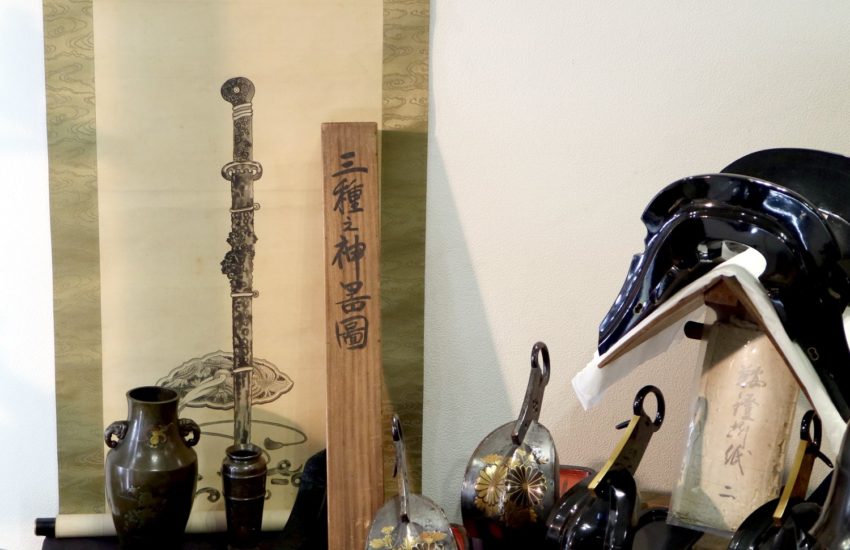Over the long years of Japan’s history, swords have been created, used, and in many cases, lost to time and other circumstances. After periods of war, unrest, and changing social and political dynamics, it is no wonder that so many a lost Japanese sword has entered legend.
In some cases, there are stories of the eventual discovery of a lost, stolen, or confiscated sword. However, there are some tales that as of yet have no clear, decisive conclusion.
How Do Japanese Swords Become Lost?
Ancient Japanese swords were – and still are – incredibly revered for their deadly beauty. There have been several periods in more recent time when Japanese swords were subject to less than full appreciation. These periods include times when the current Japanese government restricted the using or carrying traditional Japanese swords. And there was also the much more impactful period immediately following the end of World War II.
World War II: Destruction and Confiscation
During and after the conclusion of World War II, millions of Japanese swords were confiscated, destroyed, or stolen by American soldiers under orders from General MacArthur. Many were actually dumped into Tokyo Bay, where they yet remain to rust and decay. This is perhaps the most recent massive event resulting in the widespread loss of priceless swords from Japan.
Some, however, escaped the destruction. These swords include those family heirlooms kept hidden away, those deemed to be priceless treasures by American officials, and those taken by American and other Allied soldiers as souvenirs of the war.
Over the many decades since the conclusion of the war, more and more lost Japanese swords have found their way back into the public eye. There have been many kindhearted efforts to return especially priceless heirlooms to the descendants of their original owners in Japan.
A Japanese Sword Now Lost in Time
Due to the numerous sword smiths who created many amazing blades hundreds of years ago, as well as a poor record-keeping system, there is no definitive list of lost swords from Japan. However, there are many stories about lost and (occasionally) found Japanese swords.
Honjo Masamune: Lost Treasure of Japan
Perhaps the most famous lost Japanese sword is the Honjo Masamune. Masamune is generally considered to be the greatest sword smith in all of Japan’s history. The height of his career is placed in the late 13th century. Swords made by Masamune rank high above others due to their so-called ‘benevolent’ nature that refuses to kill unnecessarily.
The Honjo Masamune takes its name from a general, Honjo Shigenaga, who won the sword in a duel against an enemy general. It was definitely an unlikely win, when you consider how the enemy general managed to cut Shigenaga’s helmet into two. Eventually, the Honjo Masamune would become property of the infamous Tokugawa Shogunate.
So for hundreds of years, records of the Honjo Masamune could be followed backwards through history, from one owner to the last. But the surrender of Japan and the aftermath of World War II would play the deciding role in the terrible loss of the Honjo Masamune. As an example to everyone else, the owner of the Honjo, Tokugawa Iemasa, handed over his family’s entire collection of swords to the American soldiers. This included the great Honjo Masamune.
And, thus, the Honjo Masamune has never been seen again. There is also no record of the mysterious soldier who collected the Tokugawa sword collection, the oddly-named Coldy Bimore. Nor is it known whether the swords were destroyed or stored. And the mystery of the Honjo Masamune still plagues Japanese sword enthusiasts the world over.
Shimazu: The First Masamune in 150 Years
The Shimazu Masamune is another sword made by the legendary sword smith Masamune. In a nice departure from the last story, this sword was actually recovered in 2014. An anonymous man brought the then-unknown sword to the Kyoto National Museum, where it was concluded that the blade could only have been made by Masamune.
This lost Japanese sword is believed to be the one given to the Imperial Family by the 14th Tokugawa shogun, Ieshige, in 1862. It was in commemoration of his marriage to the Princess Kazunomiya. The Shimazu Masamune is the first legitimate Masamune blade to be found in about 150 years.
12th Century Kohoki: Ancient Antique Attic
Although this sword was found back in 1939, it only recently underwent restorations that revealed its true nature. It had been hidden away in the ceiling of a building at the Kasuga Taisha shrine in the city of Nara.
It only took one more ceremonial cleaning for this rusty blade to reveal itself as a hidden treasure. Experts concluded that this sword is a nameless kohoki sword made in the 12th century. Despite the lack of a signature, it may be the work of the famous sword smith named Yasutsuna.
This is definitely a case of ‘all that is gold does not glitter.’
Kusanagi-no-Tsurugi: Unseen Treasure
The Kusanagi-no-tsurugi is yet another incredibly famous Japanese sword. It is part of a collection of objects known as Japan’s Imperial Regalia, and holds important ceremonial value to the culture of Japan.
A sword pulled straight from ancient legend, the Kusanagi supposedly helped the great god Susanoo kill the eight-headed serpent Yamato-no-Orochi. The infamous serpent-killing sword was eventually gifted to a son of the Emperor Keiko and moved from myth into reality.
Today, the Kusanagi calls the Atsuta Shrine in the city of Nagoya home. It appears on this list because it has never been truly verified whether or not the sword housed in the shrine is the real Kusanagi. It has only ever been pulled out to accompany a new emperor during a coronation ceremony, but even then in careful wrappings.
Muramasa’s Blades: Cursed Swords
Muramasa, a legendary sword smith of the same miraculous ability as Masamune, lives on in infamy due to the bloody tales surrounding his blades. Nowadays, the swords of Muramasa’s that are still left rarely make it into an exhibition due to the eerie curse still believed to haunt them.
The Sword of Yoshida Shoin: One of the Last Samurai
The lost Japanese sword of one of the last samurai, Yoshida Shoin, was discovered in the collection of an American. Shoin was actually one of the supporters to end the feudal government ruled by the samurai. His revolutionary attitude and actions led to his execution in 1859, but not before gifting his sword to his younger sister.
The tanto sword of Yoshida Shoin eventually landed in the hands of the silk merchant Ryoichiro Arai, who traveled to America in 1876. When the sword reappeared to the public eye in 2016, it was in the collection of a Tim Arai, a resident of Berkeley, California.
Now that’s an awesome family heirloom to have on your hands!
Lost and Found in Minnesota
Left in a basement for decades, a bladed weapon in Minnesota was eventually determined to be a lost Japanese sword from World War II.
It had been brought home to America by a soldier following the end of the war in Japan. After he died in 1995, the sword almost got melted down in a pit. The family elected to send it back to Japan and to the descendants of its original owner. Ultimately, many Japanese swords brought overseas after the conclusion of World War II have been found and returned in this manner. And many more now circulate in the leading sword collecting circles.
On the Hunt for a Lost Japanese Sword
Many historians and independent collectors continue to stay on the hunt for a lost Japanese sword. Whether they are on the lookout for the legendary Honjo Masamune (good luck), or any number of other nameless and forgotten but gorgeous swords, they haunt sword collector’s conventions and shows.
Such a hobby is difficult, because the reason these swords were lost in the first place generally comes down to poor record keeping. Even a sword that has been pretty closely guarded, such as the Kusanagi-no-tsurugi, may not even be the original.
So, if your goal is to make the next big discovery of a lost Japanese sword, you might want to not count your chickens before they hatch. But don’t give up hope either – new discoveries are made in the most unlikely of places and you may be the next lucky searcher!

